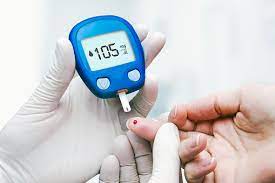Diabetes is a disease in which blood sugar levels are more than normal. The body of persons with diabetes experience problems converting food to energy. Diabetes can develop due to the failure of the pancreas to make sufficient insulin or that the body cells are not able to use insulin properly. This increases glucose levels while the cells are deprived of energy.
Diabetes Testing
The following tests are used for diabetes testing:
• Oral Glucose Tolerance Test: During this test, the blood glucose level of a person is measured two hours after a person drinks a beverage containing glucose. Before this, he/she should have fasted for about eight hours.
• Fasting Plasma Glucose Test: The blood glucose of a person who hasn’t eaten for eight hours is measured.
• Casual Plasma Glucose Test or Random Plasma Glucose Test: This is performed regardless of the time the person ate. This test is used to diagnose diabetes together with assessment of other symptoms.
All the above tests are used to diagnose diabetes and pre-diabetes except for casual plasma glucose test that only measures diabetes. To confirm a test indicating that a person has diabetes, he takes a second test on a different day.
The Fasting Plasma Glucose Test is the preferred test for diabetes because it’s convenient and costs less. However, it is not as effective as the Oral Glucose Tolerance Test as it misses some diabetes found with the Oral Glucose Tolerance Test. The Fasting Plasma Glucose Test is most reliable when done in the morning. People with a fasting glucose level of between 100 and 125 mg/dl have some form of pre-diabetes known as impaired fasting glucose (IFG). An indication that a person has an IFG means that the person has a greater risk of getting type two diabetes. Having a level of 126 mg/dl and above means that person has diabetes.
Research indicates that the Oral Glucose Tolerance Test is more accurate than the Fasting Plasma Glucose test in the diagnosis of diabetes. It is, however, less convenient to carry out. It requires a person to fast for about eight hours before taking the test. The glucose level is then measured before and two hours after the person has taken a beverage containing glucose. If the blood glucose level lies between 140 and 199, the person has impaired glucose tolerance that is similar to IFG. A glucose level of 200mg/dl means that the person has diabetes.
Gestational diabetes is also measured through the Oral Glucose Tolerance Test. One hundred grams of glucose are dissolved in the water/liquid for the test. The blood glucose level is checked four times during the test. If the blood glucose level is more than standard in two of the tests, the person has gestational diabetes.
A casual or random blood glucose level of 200 mg/dl and higher can be a pointer of diabetes, especially if the person experiences increased thirst, increased urination and unexplained weight loss. Other symptoms may include fatigue, increased hunger, blurred vision and sores that take time to heal. These symptoms are confirmed with the Oral Glucose Tolerance and Fasting Plasma Glucose Tests.

